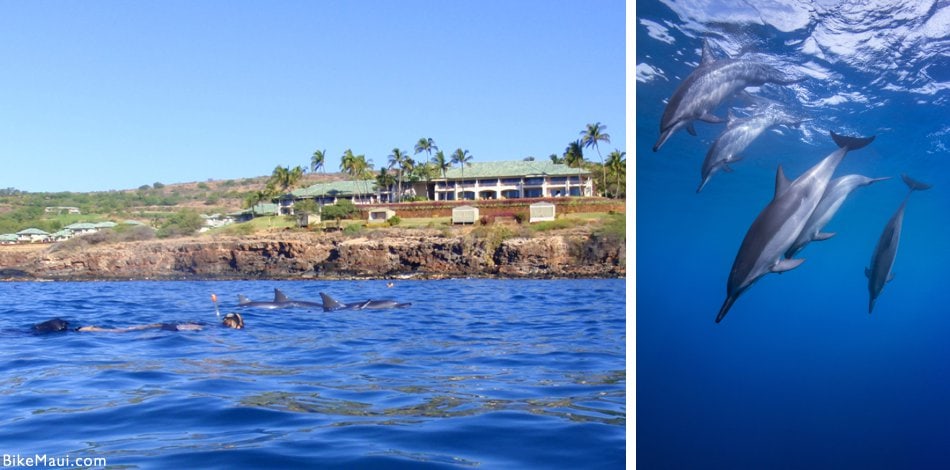Molokini History
Molokini History Infographic
Below the infographic, you’ll find more detailed information about Molokini history.
BACK TO INFOGRAPHICS
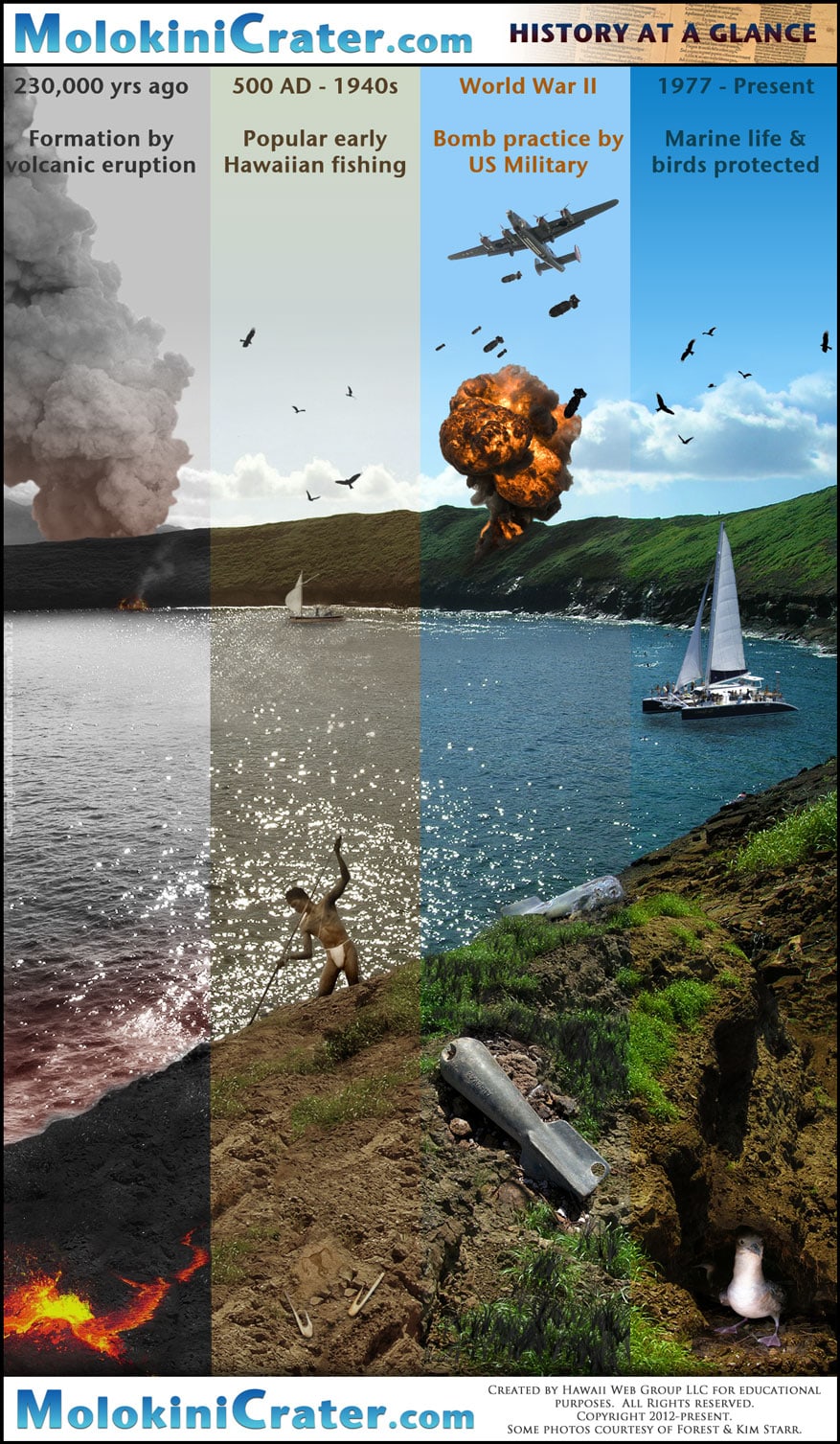
Molokini Timeline
Molokini Crater has gone through many phases throughout history.
Creation – Scientific
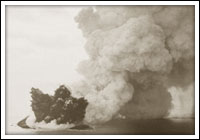 The sunken volcanic cinder cone of Molokini Crater was formed as the land mass of Maui moved over hot spots in the Earth’s tectonic plates. At this time, the volcanic eruptions occurred in many spots on the southwest side of Maui.
The sunken volcanic cinder cone of Molokini Crater was formed as the land mass of Maui moved over hot spots in the Earth’s tectonic plates. At this time, the volcanic eruptions occurred in many spots on the southwest side of Maui.
Though previously thought to have erupted in the last 50,000 years, more recent studies find that it was more likely an older eruption that created Molokini Crater some 230,000 years ago. A graduate student at Kyoto University in Japan, Yoshitomo Nishimitsu, along with scientists at the Hawaiian Volcano Observatory concluded through potassium-argon dating that it indeed erupted at the earlier date. Molokini likely erupted along with other relatively concurrent eruptions along Haleakala’s southwest rift zone.
Creation – Hawaiian
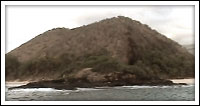 Though the stories vary, we find the general theme is the same. The fire goddess, Pele, was in love with a prince (who also happened to be a gecko or Mo’o.) The prince fell in love with another woman, and in her fury, Pele took her revenge. Depending on the source, she cut either the Mo’o or the woman in half. The head of the body became Pu’u Olai, which is the cinder cone mound on the north end of Makena Beach (Big Beach.) His/her body became Molokini Crater. The stories differ, but the fact remains: You don’t mess around with Pele’s emotions.
Though the stories vary, we find the general theme is the same. The fire goddess, Pele, was in love with a prince (who also happened to be a gecko or Mo’o.) The prince fell in love with another woman, and in her fury, Pele took her revenge. Depending on the source, she cut either the Mo’o or the woman in half. The head of the body became Pu’u Olai, which is the cinder cone mound on the north end of Makena Beach (Big Beach.) His/her body became Molokini Crater. The stories differ, but the fact remains: You don’t mess around with Pele’s emotions.
Fishing Grouds
 Due to the protected nature of the reef at Molokini Crater, this area attracts a number of fish. Proof has been found (in remnants of ancient Hawaiian fishing gear) that the Hawaiians had been visiting Molokini for many years to fish the abundant waters as well as harvest eggs from the many birds living on the island atoll. It’s unsure exactly how long they had been visiting Molokini. Polynesians are thought to have first arrived within the Hawaiian island around 500 AD. We assume they visited from around this time all the way up to the bombing from the US military (which obviously made it much less attractive to risk fishing.)
Due to the protected nature of the reef at Molokini Crater, this area attracts a number of fish. Proof has been found (in remnants of ancient Hawaiian fishing gear) that the Hawaiians had been visiting Molokini for many years to fish the abundant waters as well as harvest eggs from the many birds living on the island atoll. It’s unsure exactly how long they had been visiting Molokini. Polynesians are thought to have first arrived within the Hawaiian island around 500 AD. We assume they visited from around this time all the way up to the bombing from the US military (which obviously made it much less attractive to risk fishing.)
Destruction
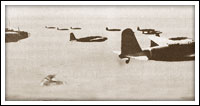 Once the United States entered into World War II, the military allowed Molokini Crater to suffer the same fate as it’s neighbor island Kahoolawe by thoroughly bombing the area for practice. The unique shape of Molokini was found useful due to its long shape and similar slender target area of a submarine or battleship. After bombing had stopped, the area was pilfered of its black coral by collectors. Since then, both in 1975 and 1984, unexploded ordinances were detonated by the US Navy at Molokini Crater. In doing so, the US Navy destroyed large amounts of fragile corals on the reef.
Once the United States entered into World War II, the military allowed Molokini Crater to suffer the same fate as it’s neighbor island Kahoolawe by thoroughly bombing the area for practice. The unique shape of Molokini was found useful due to its long shape and similar slender target area of a submarine or battleship. After bombing had stopped, the area was pilfered of its black coral by collectors. Since then, both in 1975 and 1984, unexploded ordinances were detonated by the US Navy at Molokini Crater. In doing so, the US Navy destroyed large amounts of fragile corals on the reef.
Conservation
 Finally, the public was heard, and the US government deemed Molokini Crater and the surrounding 77 acres a Marine Life Conservation District and Bird Sanctuary. The reef has restored its health (to a degree of what it once was), and the fish have come back in droves. Now the island is used primarily as a tourist destination for snorkeling, scuba diving, and snuba diving. Access for boats has been restricted to a certain amount of moorings. There is still some controversy as to whether the abundance of snorkelers is damaging the reef, and whether the constant visits of swimmers is affecting marine life’s natural response to human contact.
Finally, the public was heard, and the US government deemed Molokini Crater and the surrounding 77 acres a Marine Life Conservation District and Bird Sanctuary. The reef has restored its health (to a degree of what it once was), and the fish have come back in droves. Now the island is used primarily as a tourist destination for snorkeling, scuba diving, and snuba diving. Access for boats has been restricted to a certain amount of moorings. There is still some controversy as to whether the abundance of snorkelers is damaging the reef, and whether the constant visits of swimmers is affecting marine life’s natural response to human contact.
In 2019-2020, discussion on how to extract or detonate a few more ordinances are on going. Let’s pray they think of a way to clean things up rather than blow things up.
Lana’i Island from Lahaina
Molokini isn’t the only place to go with great snorkeling! Those staying closer to Lahaina should consider a trip to the nearby island of Lana’i (the Pineapple Isle.) The snorkeling around this seldom-visited island is spectacular.
If you still have your heart on visiting Molokini, and you’re staying near Lahaina, consider driving to Maalaea Harbor (20+ minutes.) Some boats do go to Molokini from Lahaina, but it’s a very long trip.
